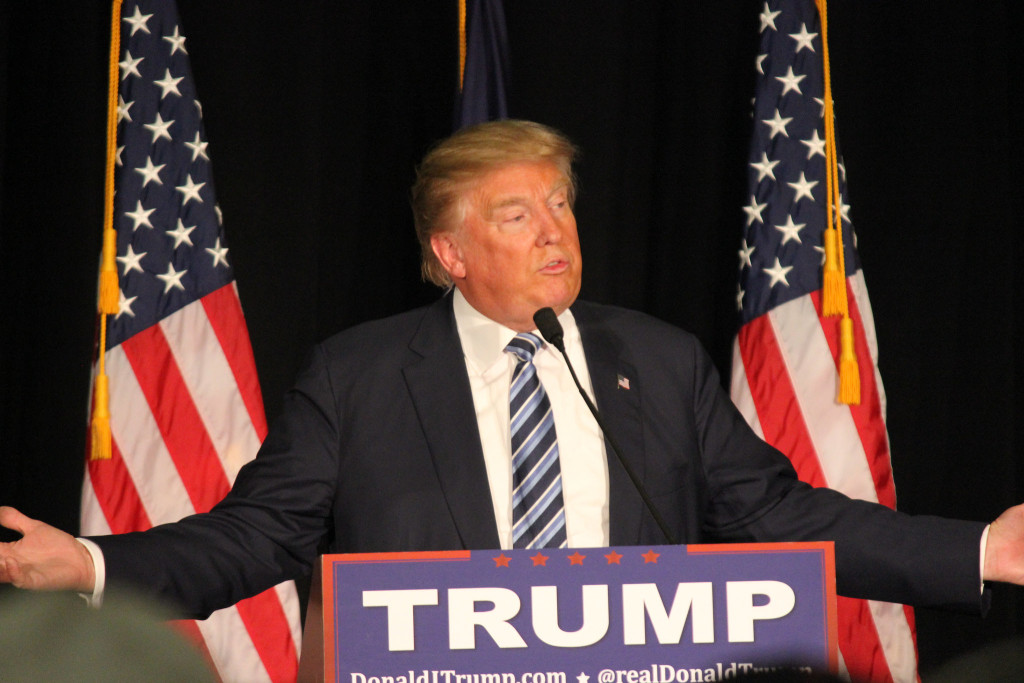
There’s still a lot of the U.S. waiting to be wired up. asharkyu/Shutterstock.com
By Krishna Jayakar | Associate Professor of Telecommunications
A promise to restore America’s crumbling infrastructure was a key part of President Donald Trump’s campaign speeches. He pledged to rebuild America’s roads and bridges, ports and highways, which are undoubtedly in need of repair. Less clear in his speeches – and in these early days of his administration – is what importance he gives broadband internet, an equally essential infrastructure in our 21st-century information economy. A quarter of Americans still have no broadband, and 12 percent live in places where they can get service from only one provider or none at all. ![]()
Very broadly, governments have two tools to change any particular industry: funding and regulation. Trump’s budget blueprint released on March 16 leaves no doubt that the president’s focus is on beefing up America’s defense and security capabilities. To fund his significant increases for defense, homeland security, veterans affairs and law enforcement, Trump proposes cuts across the rest of the federal government.
Several agencies that directly or indirectly fund broadband service may have less money to spend, despite the benefits high-speed internet access can bring to individuals, businesses and their communities. My own research at the Institute for Information Policy at Penn State, and that of many others, has shown that broadband penetration can have multiplier effects on jobs creation, small business startups, wages and incomes, property values and community renewal. Even modest investments can have lasting benefits.
Beyond the potential for spending cuts, Trump’s early regulatory moves suggest he is not making broadband access a priority. If he harms broadband service, President Trump risks missing an opportunity to invest in a proven economic engine for the country.
Key programs on the chopping block
One group whose federal funds are slated for total elimination is the Appalachian Regional Commission, which (among other functions) helps people and communities pay for broadband service in some of the most economically depressed regions of the country. It supports remote access to doctors, small business connections to larger markets, and job training and education programs from teachers and experts elsewhere – all brought into rural areas via the internet.
Another federal agency destined for the chopping block, the Institute for Museum and Library Services, coordinates various efforts to provide internet service to communities through their local libraries and museums.
Wider funding cuts for executive departments, even if they don’t directly target specific agencies or programs, are also likely to affect broadband funding. For example, the Housing and Urban Development department, targeted for a 13 percent cut, offers several programs, including Neighborhood Networks, which provide computer and internet access and online job training to people who live in public housing. Whether that and other internet-related programs across the government survive will become clearer only in the days and weeks to come, as the budget proposal is formalized and then works its way through Congress.
Some glimmers in the darkness
A few government programs’ budgets may see an increase: Trump’s blueprint modestly increases funding for the National Telecommunications and Information Administration’s projects developing better ways to provide high-speed wireless internet services. Current wireless networks are under significant pressure from the explosion of demand for mobile broadband service. Transmissions from wireless devices – items like wireless speakers, alarm systems and refrigerators – as well as autonomous cars will only increase the need to better manage radio frequencies.
Another piece of potentially good news is that lots of the money for expanding broadband service across America comes from other sources than the federal budget. American broadband companies continue to invest heavily in their networks. A telecommunications trade group reports that the industry has invested US$250 billion in broadband infrastructure since 1996, including $90 billion in the last seven years.
Still, the broadband industry, which took in $131 billion in revenue in 2016, remains highly profitable. President Trump has met with broadband company CEOs to encourage them to invest more. In late March he cited a $25 billion investment pledge from Charter Communications as evidence of his success – though critics quickly pointed out that Charter’s decision had been years in the making.
But private investments can’t meet all the need, especially in markets that are not considered economically viable. To fill the gap, government-mandated programs subsidize low-income customers, rural health clinics, schools and libraries, and rural areas with poor connectivity. Funding for these programs comes from the Universal Service Fund, through a fee assessed on telecommunications providers based on how much their subscribers pay for service. Most companies charge their customers to recover this cost, making it another form of public funding of broadband expansion. This fee, established as part of the Telecommunications Act of 1996, is raised and spent outside the regular federal budget process, so it may not be affected by Trump administration policies.
Regulatory steps
Beyond spending or distributing money, the federal government can affect broadband investments with regulations. These are also outside the budget itself, but regulatory requirements can work in conjunction with spending plans. Many regulations are obscure and highly technical. They govern the nitty-gritty mechanics of the telecommunications industry, such as prices telecom companies charge each other to connect networks, where physical wires run, and which radio frequencies are used for television channels and which for mobile broadhand. When well-crafted, these rules can encourage competition, which boosts speeds and service quality while decreasing prices.
So far, though, the Trump administration’s regulators are taking a hands-off approach to broadband service. In March, Trump’s Federal Communications Commission chairman, Ajit Pai, withdrew authorization from some telecom companies previously approved to participate in the Lifeline program, which subsidizes broadband access to low-income customers. That may mean fewer companies offering Lifeline service, less money spent letting potential customers know about the program and fewer low-income people getting online.
Another regulatory move that’s widely expected is FCC action to reverse the Open Internet Order, protecting what is also called “net neutrality.” Under those rules, formalized in 2015, internet service providers are required to deliver all online content to their customers at equal speeds, without slowing down traffic from any sites or charging some services for faster connections. Supporters say the rules help keep the internet open for innovation, while critics say it is too much regulation that hurts broadband providers.
Both Pai and President Trump have vowed to undo net neutrality. How that will affect the market is unclear. It may spur broadband providers to increase their investments to take advantage of being able to charge content companies for faster delivery of their traffic. But it might slow innovation if new startups find it difficult to reach customers through the ISPs’ bottlenecks.
President Trump came to office promising to create jobs, enhance American economic competitiveness and renew communities. He could take advantage of the proven power of broadband investments to help achieve all those goals. But at present, he appears to be moving away from that path, not using taxpayer dollars, agency regulations or the power of the presidential bully pulpit to push industry players to expand broadband to every American.
Krishna Jayakar, Co-Director, Institute for Information Policy and Associate Professor of Telecommunications, Pennsylvania State University. This article was originally published on The Conversation. Read the original article.



